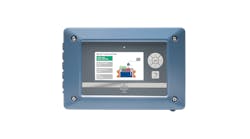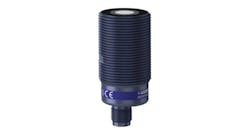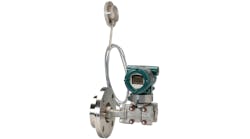Twenty years had passed, and the manufacturer’s ionization-chamber-based detector for level measurement was no longer manufactured or supported. The distillation column bottoms application was uncommonly unfriendly to floats, displacers and differential pressure methods (DP) due to its viscosity and tendency to polymerize, so a nuclear level device was an attractive choice. The site was already licensing and maintaining nuclear instruments for other applications, so the task of adding new nuclear sources to their existing license was less intimidating. Lacking any additional level instruments—a gauge glass, for example (which had plugged up and was effectively abandoned many years ago), the tower control was extremely reliant on this single, obsolete level solution.
What was the level, really? Nuclear or radiometric level instruments function by directing a carefully sized and focused beam of gamma radiation through the vessel containing the substance of interest. The beam is electromagnetic radiation, like X-rays, microwaves (or light, for that matter), and one can imagine the receiving instrument is detecting the “shadow” cast by the process fluid. But for most detectors, it’s really the total radiation that’s correlated with level—the instrument doesn’t really “see” the progression of a shadow per se. Modern detectors are designed to function with increasingly smaller (and hence safer and easier to license) radioactive sources, so in this case, the entire span of the ionization chamber would be used in capturing and quantifying the gamma rays that made it through the vessel and the fluid. When the level is high (or the nuclear source holder’s shutter is closed) the least radiation is collected or counted, and when the vessel is empty the most radiation gets through.
The source of gamma rays in this application was a tiny quantity of cesium 137, a byproduct of nuclear fission and the decay of other radioactive isotopes. The gamma radiation produced by the 275 millicurie source was itself produced by the decay of the 137Cs. The cesium isotope therefore decreased in quantity (and “power”) over the years, and with a half-life of about 30 years, would be measurably diminished in the 20 years since its installation. How might this be reflected in the level measurement? Because the aging detector was commissioned on the new source, the gradual decay of would reduce the base radiation, and would look like a higher level than was actually present.
Rather than risk an emergency repair (possibly a futile hunt on eBay), the site elected to determine if a modern level transmitter could use the old source and provide a reliable level measurement. Detector technology has improved and even the 20-year-old source was more than adequate to support a new level measurement. The other feature one gets with modern nuclear devices is improved access to diagnostics using HART or fieldbus. Field strength or “counts” can be tracked live in a HART- or fieldbus-capable host system. Like DP or displacer measurements, the boiling liquid will have a lower density, which will tend to make the level read low as the boiling liquid not only weighs less, it absorbs less radiation, making all three methods potentially read low if they were benchmarked against pre-startup conditions.
[javascriptSnippet]
But how precise does a distillation column bottoms level need to be? Unlike a boiler steam drum, where short residence times and dire consequences from low level (boiler trip) and high level (liquid carryover) compel us to compute precise compensation for density, chances are one’s tower level can tolerate much greater uncertainty. In the example case, ensuring the level was high enough to prevent pump cavitation, maintained enough ullage to absorb disturbances, and stayed below the tower’s reboiler return meant an uncertainty as great as +/- 0.25 feet (0.1 meter) would suffice.
Combined with the difficulty of measuring the level of a hot, boiling, viscous, polymerizing substance, the tolerance for uncertainty makes the radiometric method an especially fit-for-purpose solution, where a smaller, weaker or aging source functions well within the requirements of the application.
Modern radiometric instruments for level and density are not only capable of exceeding requirements with existing sources, the option for using digital integration with HART or fieldbus affords additional insight and diagnostics to ensure the applications add value for another two decades. End users are encouraged to be alert to cases where obsolete technology could be a threat to future reliability.






